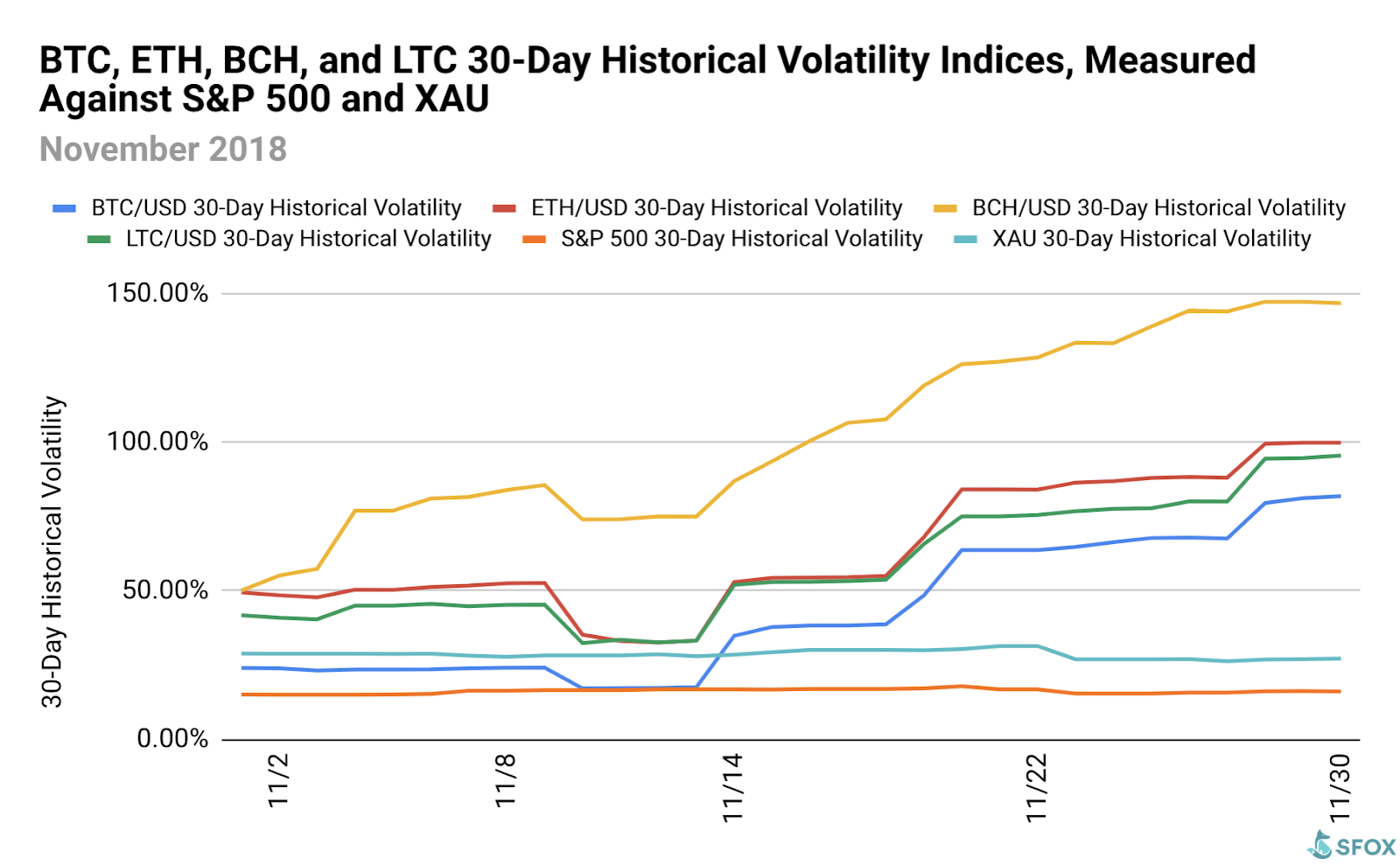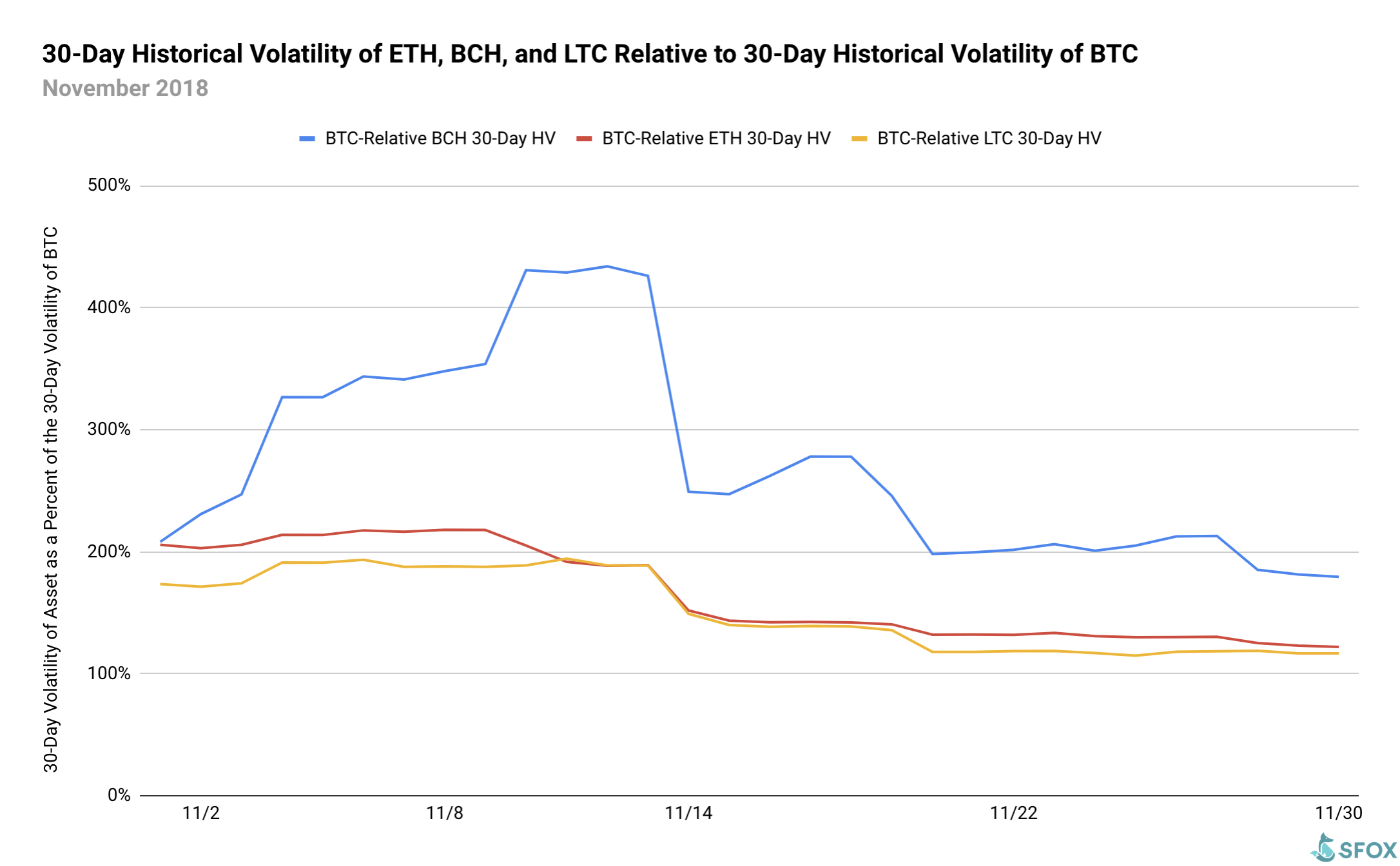Until the start of November, crypto volatility was trending down. Then, several major events happened and the whole cryptosphere went off the charts. But why? According to the Crypto Volatility report released today by SFOX, cryptoassets showed more volatility than the S&P 500 and gold during November, and there are four key factors that contributed to the market’s roller coaster ride.
Inside the Crypto Market’s Wild November

Taking into account price, volume, and volatility data from seven major exchanges and liquidity providers, SFOX analyzed spikes in volatility and matched them to major industry happenings. The key findings are below.
1. Uncertainty Before the Bitcoin Cash Fork
The uncertainty leading up to the Bitcoin Cash hard fork caused a rampant flooding of FUD throughout the market. Bitcoin Cash pipped all other cryptos to the post when it came to volatility in November. In fact, its price fluctuation relative to Bitcoin’s actually doubled in the moments before the fork.
The four major assets listed by SFOX — BTC, ETH, BCH, and LTC — all demonstrated the same rise in volatility starting on November 14, the day before the fork, but BCH volatility came into its own on November 15.
2. The Hash War After the Fork
The Bitcoin Cash fork was always going to be a natural recipe for increased crypto volatility, but it continued to wreak havoc after the event. SFOX confirms that the ongoing hash war remained a key driver of volatility even after the fork, as BCH and BSV competed for common hash power, and the outcome for both chains was uncertain.
3. The SEC Clamping Down on ICOs
Another major event in November that set crypto volatility further alight was an SEC announcement on November 16. The US Securities and Exchange Commission stated that settlements had been made with two multimillion-dollar ICOs from 2017, Airfox and Paragon Coin.
This news led to a general wave of concern among US-based ICOs and further uncertainty about the future of similar ventures in the country, sending the market into a further tailspin.

4. Institutional Buy-in
On November 28, the market saw a brief rebound as prices looked to start their recovery process. This appears to have been due to another announcement by the SEC. This time it was chairman Jay Clayton reinforcing at Consensus: Invest that BTC is not considered a security is therefore not subject to SEC regulations.
He went on to say that digital assets like BTC are “unequivocally” here to stay despite the current bear market. Head of Growth at SFOX, Danny Kim, also spoke on Yahoo! Finance, assuring the community that “institutions are still actively trading” crypto in the bear market.
These reassurances about institutional interest in crypto and reaffirming its longevity drove crypto volatility higher as prices rebounded.
Crypto Volatility: What to Look for in December and Beyond
We all know that the cryptocurrency market is highly susceptible to external pressures and events. Large conferences and especially announcements from regulators can have a significant effect. With that in mind, SFOX gives some clues on what to look out for this month.
On December 5-6, London’s biggest fintech event takes place and will showcase major crypto activity and announcements that could affect prices. On December 19, CBOE BTC futures expire. This has usually led to at least a brief uptick in BTC volatility in the time leading to the expiration and shortly after as well.
On December 28, both CME and BitMEX futures contracts also terminate, marking the last major crypto futures expirations of the year, which could potentially fuel crypto volatility further.
Bakkt (once it gets the stamp of regulatory approval) when it begins trading next month is also likely to have a major effect on crypto prices — hopefully for the better.
Featured Image from Shutterstock
Get Exclusive Crypto Analysis by Professional Traders and Investors on Hacked.com. Sign up now and get the first month for free. Click here.








